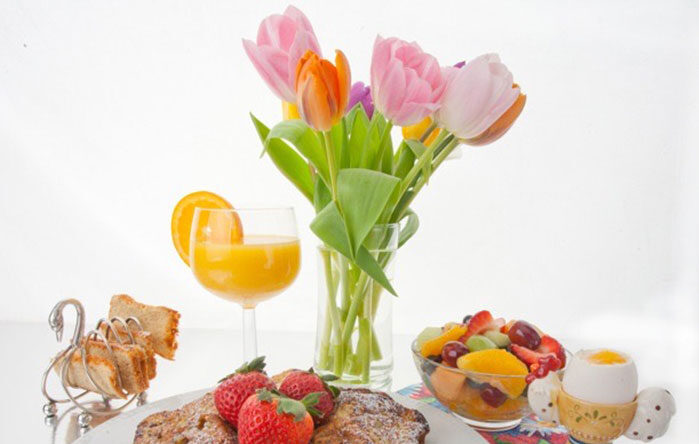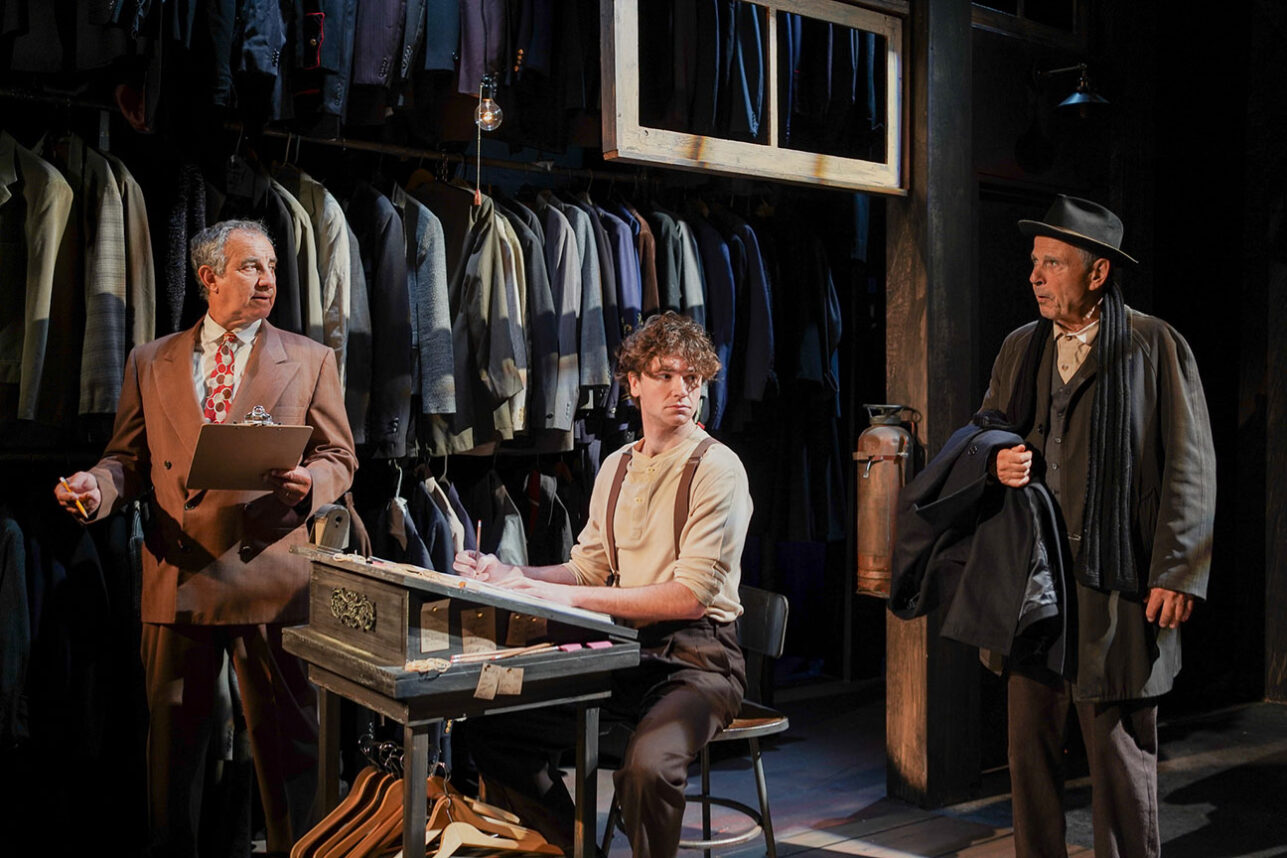What is it about lights twinkling in the darkness that is so … transporting? Is it the contrast between dark and light, or the subliminal message that nothing is ever entirely dark after all? Is it a primal reminder, wired into our souls via its association with stars and the Milky Way, of the infinity of the universe and how small our place is in it? Or that, just in general, there’s more to be seen than meets the eye?
These questions peek through like sky behind the schach when my family and I decorate our sukkah. We try to make it a starry canopy of ornaments and glitter, hung with memories and holiday lights, sending souls to soar.
Standing right outside the kitchen in front of the garage, our sukkah is distinctive partly for its unusual walls — we use ’50s-style roll-up window shades made of earth-toned plastic straws, which allow us to hang things by poking plastic ties between the straws, and we start with that. There’s the silk wall hanging with the Hebrew words “Chag Sameach” painted in oils by my middle daughter long before she was a professional artist, and the “Shehecheyanu” banner we all painted years ago at a Jewish retreat, with a likeness of our old house and the handprints of all three children.
But the real action is on the ceiling, hung with decades of reflective things, now a dangling, ever-growing family history. From my sister, giant metal apples hung on velvet ribbons; beaded pomegranates; grapes of sculpted Styrofoam spray-painted gold; and also stuffed-fabric pumpkins and eggplants suspended on strings with twist-’ems from the supermarket.
From my children, now-ancient cardboard sukkahs made in elementary school with glittered window frames and paper chains: a white one messily crayoned, another that’s bright yellow and hot pink, and a sturdy royal blue one striped with glitter — each a trapeze of color swinging from the rafters of bamboo.
For greenery, my husband cuts long expanses of overgrown grapevine from our back-porch trellis and stretches them out along all four sukkah walls, anchoring the stems in family-size grape-juice bottles he fills with water. Over the course of the holiday, they turn all the colors of fall.
And then, the lights. Our friends in America long ago determined that candles were unsafe on Christmas trees, and so invented strands of cool and tiny light bulbs strung together on green wires; these my husband arranges in rows, providing light that’s just enough to see by. Last of all, suspended on refashioned clothes hangers from the bamboo poles supporting the schach, he hangs six IKEA lanterns, opens their glass doors and lights tea lights placed inside. These minor lights reflect off the other decorations — the glitter, the gold paint, the beads — and the whole room glimmers like … well, like a night sky off the interstate, far from the city, or the night sky peeking through the schach, as per God’s own holy Torah.
What does any of this have to do with Sukkot? What does it have to do with being surrounded by God’s love and protected only by the cloud of the Shekhinah, the eternal generosity of God’s presence, rather than what we can buy or build ourselves?
What does it have to do with the reassurance that Sukkot brings us, after the grueling cheshbon we’ve made during the Days of Awe of all our failings, faults and sins — especially the enduring ones, the ones we failed to overcome last year — that we are forgiven, God still loves us, now go be
happy?
Nothing — and everything. Chasidim, I am told, don’t decorate their sukkahs — God is everywhere, and material pursuits only distract us from conjuring his presence. Close your eyes, exhale, look around you — look with your eyes closed — there is God. In your heart and in everything beautiful that you do or wish you’d done or hope to do.
But then again, there is beauty itself, and God created that as well, and our capacity to perceive it. Can the beauty in the sukkah create another way to feel his presence? During the High Holy Days, we beat our chests and feel his judgment, seeing him in all that we are not — potential unfulfilled, promises not kept. We pass like sheep before the Holy Throne trying to break through on peals of the shofar, knowing that our time is short and our end is death. We pray to be better, and we pray to keep what we have, especially the people whom we love.
Sukkot, then, reminds us that there is still life left, and the reason we want to hang on to it so badly is because it is, quite simply, so gorgeous. We march around the synagogue with our lulavs — like soldiers, it is said: God’s army, wielding weapons of green and inclusivity, the lovely mingled with the plain mingled with the fragrant, all in the battle for holiness, life and peace!
And we come home to huts of starlight, where everything from beads to Styrofoam sparkles with some hint of the beyond, reminding us that not all the darkness behind the schach is a tragedy around the corner, or a disappointment or a failure. Some of it is forgiveness, some of it is love — some of it is beautiful.
And some of it twinkles.
Joelle Keene teaches music and journalism at Shalhevet High School. She lives with her family in Pico-Robertson.





















 More news and opinions than at a Shabbat dinner, right in your inbox.
More news and opinions than at a Shabbat dinner, right in your inbox.